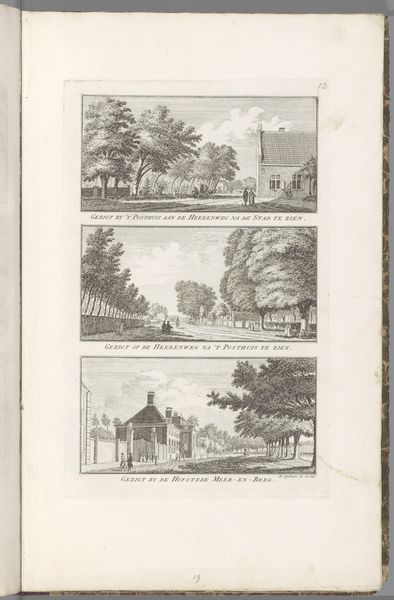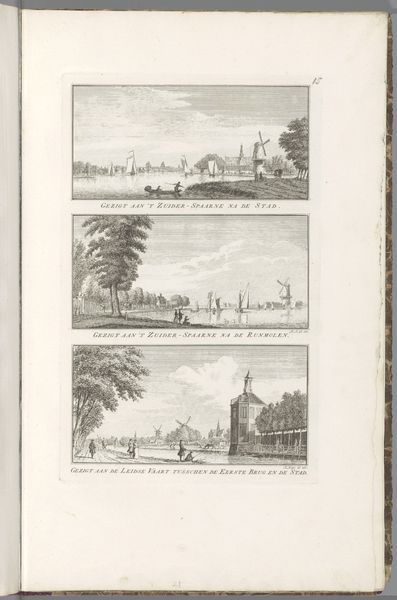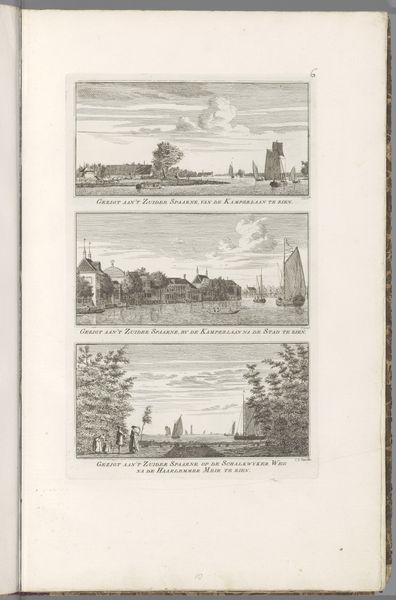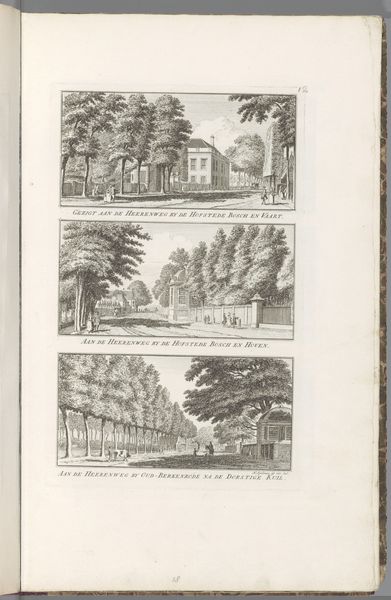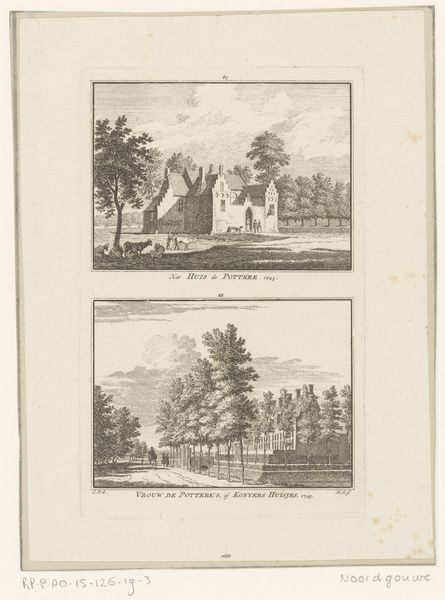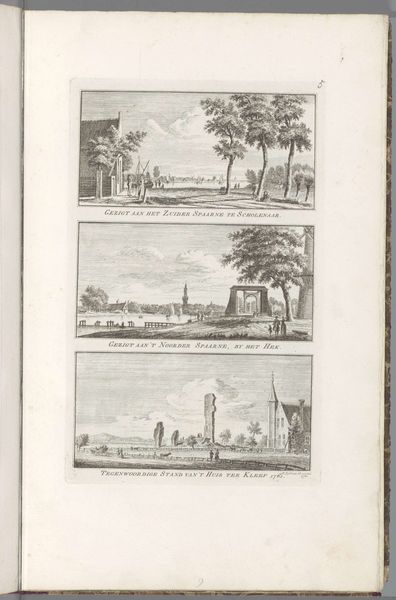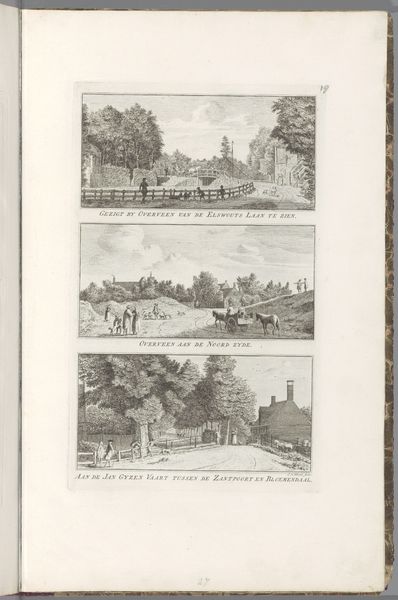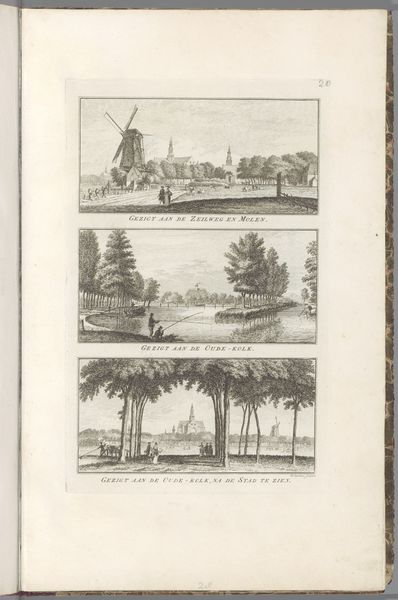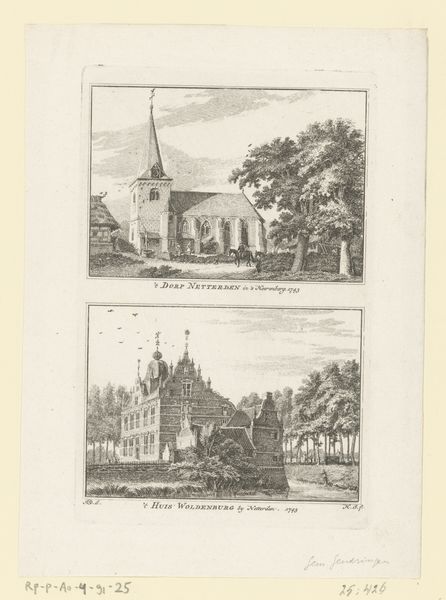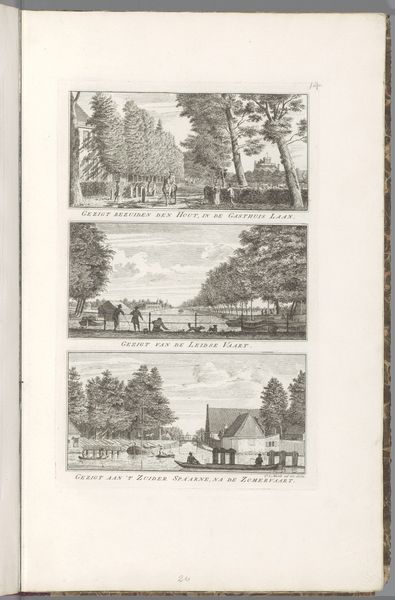
drawing, print, etching, paper, engraving
#
drawing
#
dutch-golden-age
# print
#
etching
#
landscape
#
paper
#
engraving
Dimensions: height 302 mm, width 191 mm
Copyright: Rijks Museum: Open Domain
Curator: Before us we have "Gezichten op de waterwegen naar Haarlem" or "Views of the waterways to Haarlem", a 1763 print made with etching and engraving on paper by Hendrik Spilman. It resides here at the Rijksmuseum. What's your initial impression? Editor: Three stacked images. Something about them is incredibly serene. Each seems to depict a different vantage point or moment along these waterways. An almost dreamlike feeling pervades. Curator: Interesting that you say dreamlike, since Dutch Golden Age landscapes like these, especially in print, often served to construct and idealize a sense of national identity, connecting landscape and prosperity. Editor: You can see the signs of prosperity so clearly, those buildings, manicured tree-lines and almost regal checkpoints along the routes. What’s the psychological impact of depicting the toll gates? It seems strange to highlight a place of imposed taxes as being a key characteristic of the local scenery. Curator: The toll-house becomes symbolic of regulated trade, part of a structured society proud of its infrastructure. The act of visualizing these routes also emphasizes their social importance in Dutch life. Editor: That reminds me, what are the implications of this work being rendered as prints rather than paintings? Is it just to be able to depict different points of view more economically in a single image? Curator: Accessibility and dissemination. Prints could reach a wider audience, reinforcing the vision of a well-ordered, prosperous Netherlands throughout various levels of society. It fixes the image of success within the social imagination. Editor: A brilliant move, when you see the art as reinforcing public ideology and pride. Each component is loaded with socio-historical weight and meaning. I am sure people were encouraged to interpret the landscapes in this way, cementing cultural values in each viewer. Curator: Yes, each deliberate mark etching a landscape not just on paper, but in the very fabric of cultural memory. It seems the symbolic waterways also carried the future of the young Dutch Republic! Editor: Yes indeed! Thank you!
Comments
No comments
Be the first to comment and join the conversation on the ultimate creative platform.
